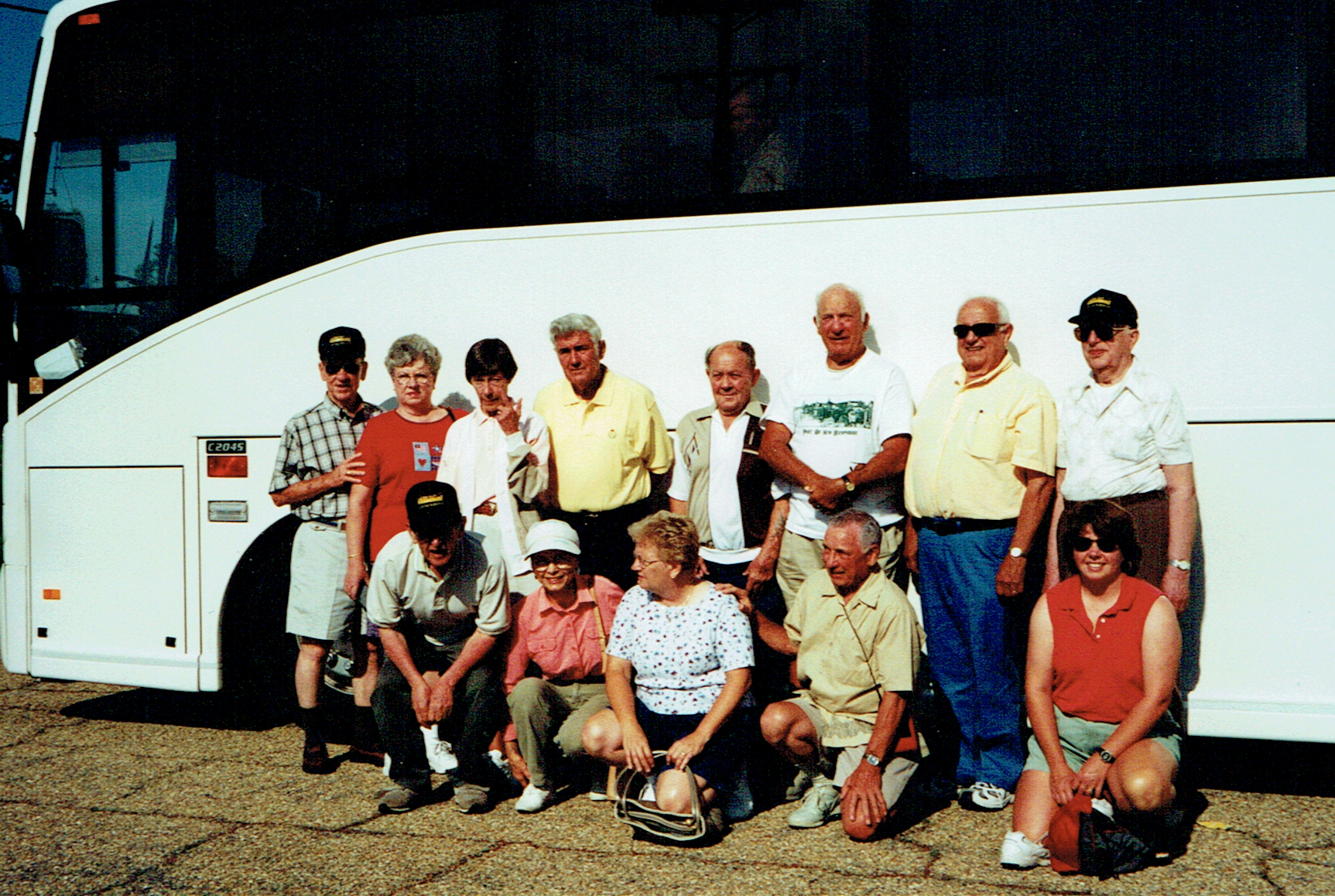LST Memories
Tom Lonnberg Aboard LST 325 in Mobile, Alabama, 2001
Today, Evansville is fortunate to have LST 325 docked along its riverfront. Through the efforts of those involved with the USS LST Ship Memorial, it is wonderful tribute to those who built and sailed these ships.
With the 77th anniversary of the Normandy Invasion occurring soon, an operation in which LST 325 participated, I want to re-share some memories from my first visit to the ship twenty years ago. This occurred only eight months after LST 325 arrived in Mobile, Alabama, following its acquisition from the Greek government and after an arduous trip across the Atlantic Ocean undertaken by a determined group of LST veterans. My visit was at the invitation of the crew of LST 543 whom I had known for several years and who arranged the tour. This time spent with a group of men I admired touring the type of ship that helped form my early career remains one of my best days working for the Evansville Museum. What follows are some of these memories.
**
On Thursday, August 2, 2001, I had the distinct privilege of touring LST 325, with the crew of Evansville-built LST 543 near Mobile, Alabama. This trip represented a culmination of nearly 14 years of interaction with LST veterans and Evansville Shipyard workers. After rendezvousing with the crew and family members in Gulfport, Mississippi, we boarded a chartered bus for Mobile. Lively conversation abounded during this trip, but as we made the exit for the LST 325, the bus became noticeably silent as several of us anticipated seeing an LST for the first time and, more significantly, the crew of the 543 was flooded with memories of seeing an LST for the first time in over five decades. The silence was quickly broken as LST 325 came into sight and as we eagerly exited the bus and boarded the ship.
Some of the crew and family members of LST 543 who toured LST 325 in 2001
After instructions from the crew of LST 325, we explored the ship to discover and to recall history. I was especially struck by the noise of the huge exhaust fan on the tank deck and could only conjecture as to the decibel level reached when tanks, trucks, and troops exited their temporary home. As with other military equipment, it was also obvious that the LST was designed to do a specific job and not for the comfort of its crew. This was apparent in the food preparation and dining areas as the ship’s galley was located one deck above the eating quarters connected by a steep ladder. Crewmembers recalled that aboard the flat bottom LST, it was an acquired talent to make the downward climb while balancing a full tray of food.
The weather deck also provided insight into life aboard an LST. As I walked across this exposed area, I recalled stories of sailors sleeping topside to escape the intense heat of the South Pacific, of standing watch during fierce typhoons, and of observing the launching and lowering of smaller craft. I especially recalled sailors’ stories of watching LCVPs and their crews heading toward the shores of Normandy unsure whether their friends would return.
My most enduring memory of this trip is the men of the LST 543. While the “baby” of the crew in Mobile was 75 years old, most of the men enthusiastically made their way to remote areas of the vessel. The spirit and energy they showed in sharing “their” ship with me and the other tagalongs is reminiscence of the spirit and energy they employed as baby faced young men sailing flat bottom ships across the open seas to deliver troops and material to war zones as they played an indispensable role in winning World War II.
**
Thomas R. Lonnberg
Chief Curator & Curator of History


